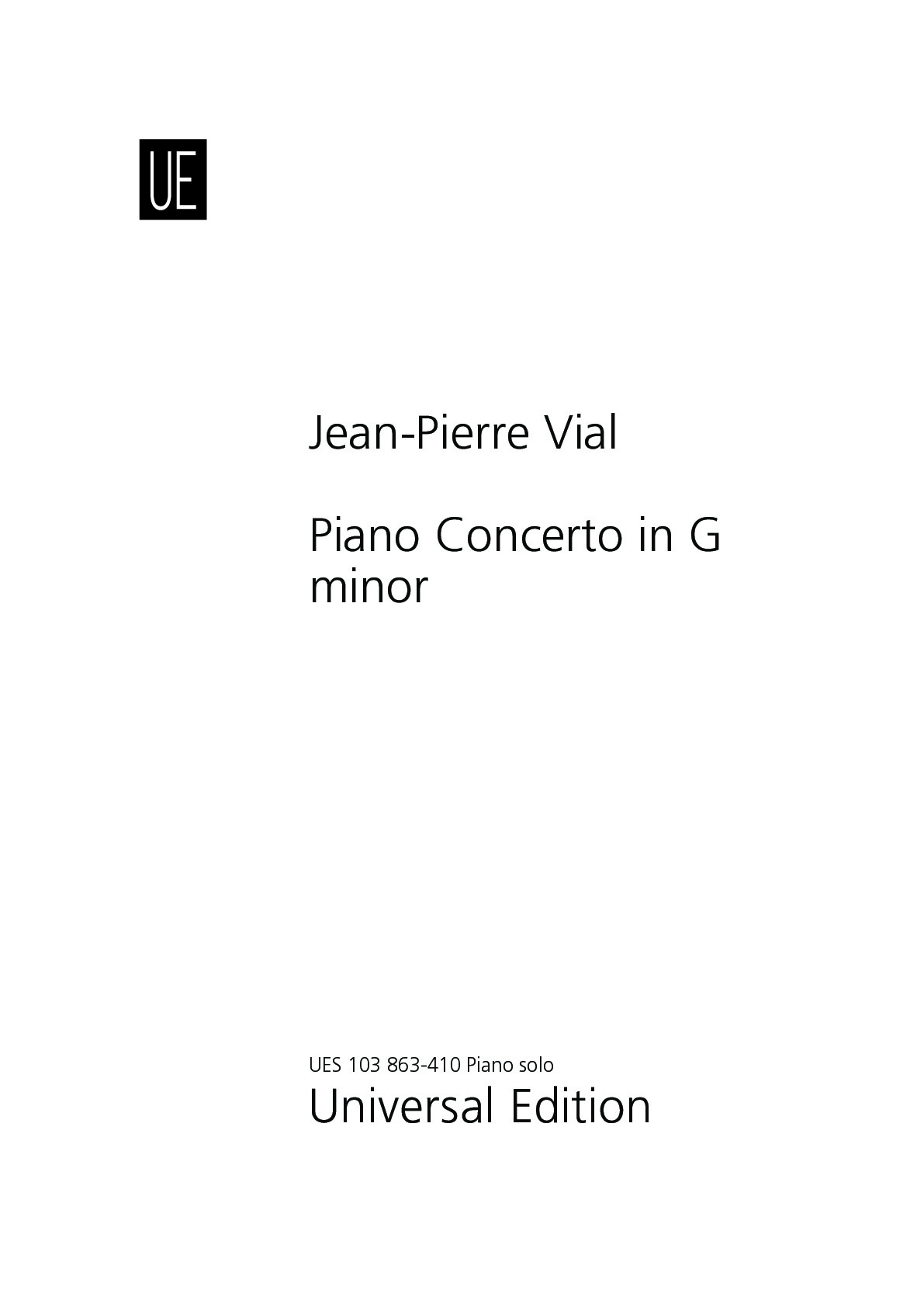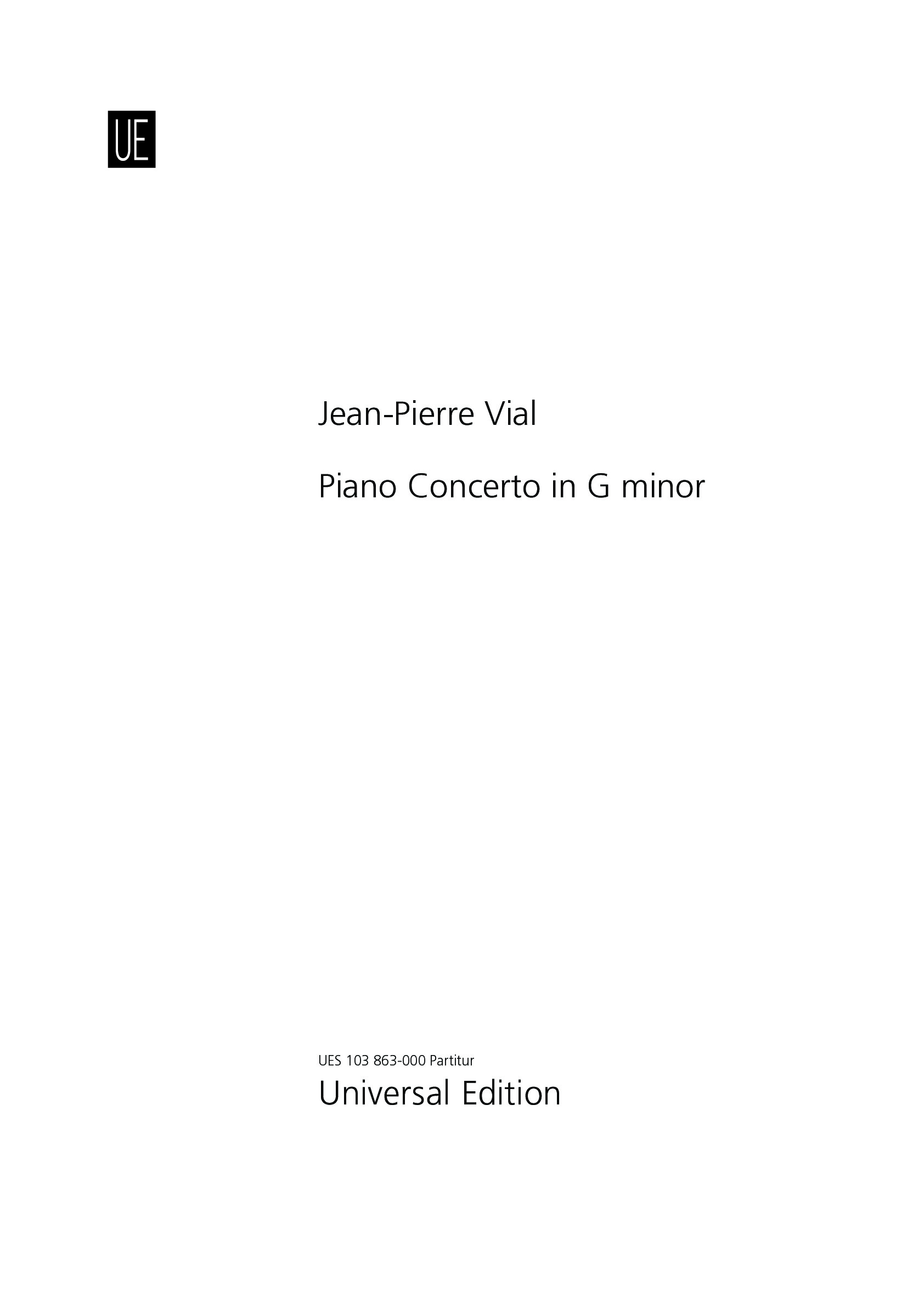

Jean-Pierre Vial
Piano Concerto in G minor
Short instrumentation: 2 2 2 2 - 2 0 2 0, str
Duration: 34'
Solos:
piano
Instrumentation details:
1st flute (+bass fl)
2nd flute (+bass fl)
3rd oboe
4th oboe
5th clarinet in Bb
6th clarinet in Bb
7th bassoon
8th bassoon
9th horn in F
10th horn in F
11th trombone
12th trombone
violin I (10 players)
violin II (10 players)
viola (8 players)
violoncello (6 players)
double bass (4 players)
Piano Concerto in G minor
Sample pages
Audio preview
Video
Work introduction
Jean-Pierre Vial composed the piano concerto in G minor between 2007 and 2011. The concerto consists of four movements, with two lively movements surrounding a slower movement and a brief scherzo.
The first movement, allegro ma non troppo, is based on two main themes. Both themes are initially exposed, then developed in their original four-beat rhythm. After a short cadenza (specified ad libitum), the themes are then developed in a ternary rhythm. The movement ends with a tutti based on the initial theme in its original rhythm.
The second movement, andante cantabile, is based on a single, lyrical and swinging theme. The development includes two series of large piano arpeggios that surround a short cadenza (also specified ad libitum). The second series of piano arpeggios concludes the movement.
The third movement is a short scherzo, initially in triple time, also based on one main theme. The movement emphasizes the scherzo concept by developing a number of rhythmic variations of the theme in three-, four-, five- and even seven-beat measures.
The finale, allegro vivace, is based on two main themes. Both themes are initially exposed, then developed using numerous syncopations. Further on, the piano introduces a swinging melody that could be analyzed as a third theme. Subsequent developments, however, lead rather to analyzing that melody as a rhythmic motif which will counterpoint the first theme. After developing those two (or three) themes, the finale ends with a tutti based on the initial theme in its original form.
What is necessary to perform this work?
- the number of string players mentioned here is indicative.
- bars 686–707 of the final allegro call for doubling bass flutes. If no bass flute is available, however, you can use a solo bass clarinet (or tenor sax as well) as a substitute. The Clarinet I part mentions a doubling bass clarinet which must only be used as a substitute for doubling bass flutes.



